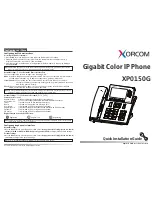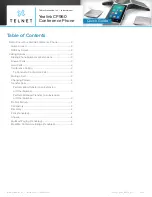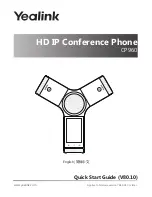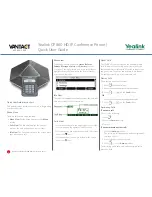
41
42
This smartphone has been tested and rated for use with hearing aids for some
of the wireless technologies that the smartphone uses. However, other wireless
technologies may be used in this smartphone that have not been tested for use
with hearing aids. It is important to try the different features of your smartphone
thoroughly and in different locations to determine if you hear any interfering noise
when using this smartphone with your hearing aid or cochlear implant. Consult
your wireless service provider about its return and exchange policies, and for
information about hearing aid compatibility.
SAR
Your device includes a radio transmitter and receiver. It is designed and
manufactured not to exceed the exposure limits for Radio Frequency (RF) set by
the Federal Communications Commission (FCC). The RF exposure limits set by
the FCC for wireless mobile devices utilize a unit of measurement referred to as
Specific Absorption Rate (SAR), which is a measure of the amount of RF energy
absorbed by the body when using a mobile device. The FCC requires mobile
device manufacturers to ensure that their mobile devices comply with these
objective limits for safe exposure. The FCC SAR limit incorporates a substantial
margin of safety to give additional protection to the public and to account for
any variations in measurements. The FCC limit for public exposure from cellular
telephones is a SAR level of 1.6 Watts per kilogram (1.6 W/kg).
This device complies with FCC radiation exposure limits set forth for an
uncontrolled environment. To ensure compliance with the RF exposure
guidelines, the device must be used at least 15mm from your body
SAR information for this device can be found on the FCC website at www.fcc.
gov/oet/ea/. Follow the instructions on the website to use the FCC ID for this
device to find SAR values for the device.
To view additional SAR information on your phone, swipe up from the home
screen, then tap
Settings
>
About
phone
>
Legal
information
>
RF
Exposure
.
Battery and Accessories
Observe the following precautions for battery use:
•
Do not attempt to open the battery (due to the risk of toxic fumes and burns).
•
Do not puncture, disassemble or cause a short-circuit in a battery.
•
Do not burn or dispose of a used battery in household rubbish or store it at
temperatures above 60ºC.
•
Do not disassemble or open crush, bend or deform, puncture or shred.
•
Do not modify or remanufacture, attempt to insert foreign objects into the
battery, immerse or expose to water or other liquids, expose to fire, explosion
or other hazard
Products that have the below symbol must be taken to collection points at the
end of their life:
• Municipal waste disposal centers with specific bins for these items
of equipment.
• Collection bins at points of sale.
You can learn more about how to recycle your mobile device by visiting the CTIA
website at www.ctia.org/news/how-to-recycle-your-mobile-device
CAUTION
: IF BATTERY IS REPLACED BY AN INCORRECT TYPE, DEVICE
MIGHT EXPLODE. DISPOSE OF USED BATTERIES ACCORDING TO THE
INSTRUCTION.
WARNING: Cancer and Reproductive Harm - www.P65Warnings.ca.gov
Chargers
Home A.C./Travel chargers will operate within the temperature range of: 0°C
(32°F) to 45°C (113°F).
The chargers designed for your mobile device meet with the standard for safety
of information technology equipment and office equipment use. Due to different
applicable electrical specifications, a charger you purchased in one jurisdiction
may not work in another jurisdiction.
Licenses
microSD logo is a trademark of SD-3C, LLC.
The Bluetooth® word mark and logos are owned by the Bluetooth
SIG, Inc. and any use of such marks by Device Manufacturer and
its affiliates is under license. Other trademarks and trade names are
those of their respective owners.
The Wi-Fi Logo is a certification mark of the Wi-Fi Alliance.
Summary of Contents for 30 XE 5G
Page 1: ...USER MANUAL...





































